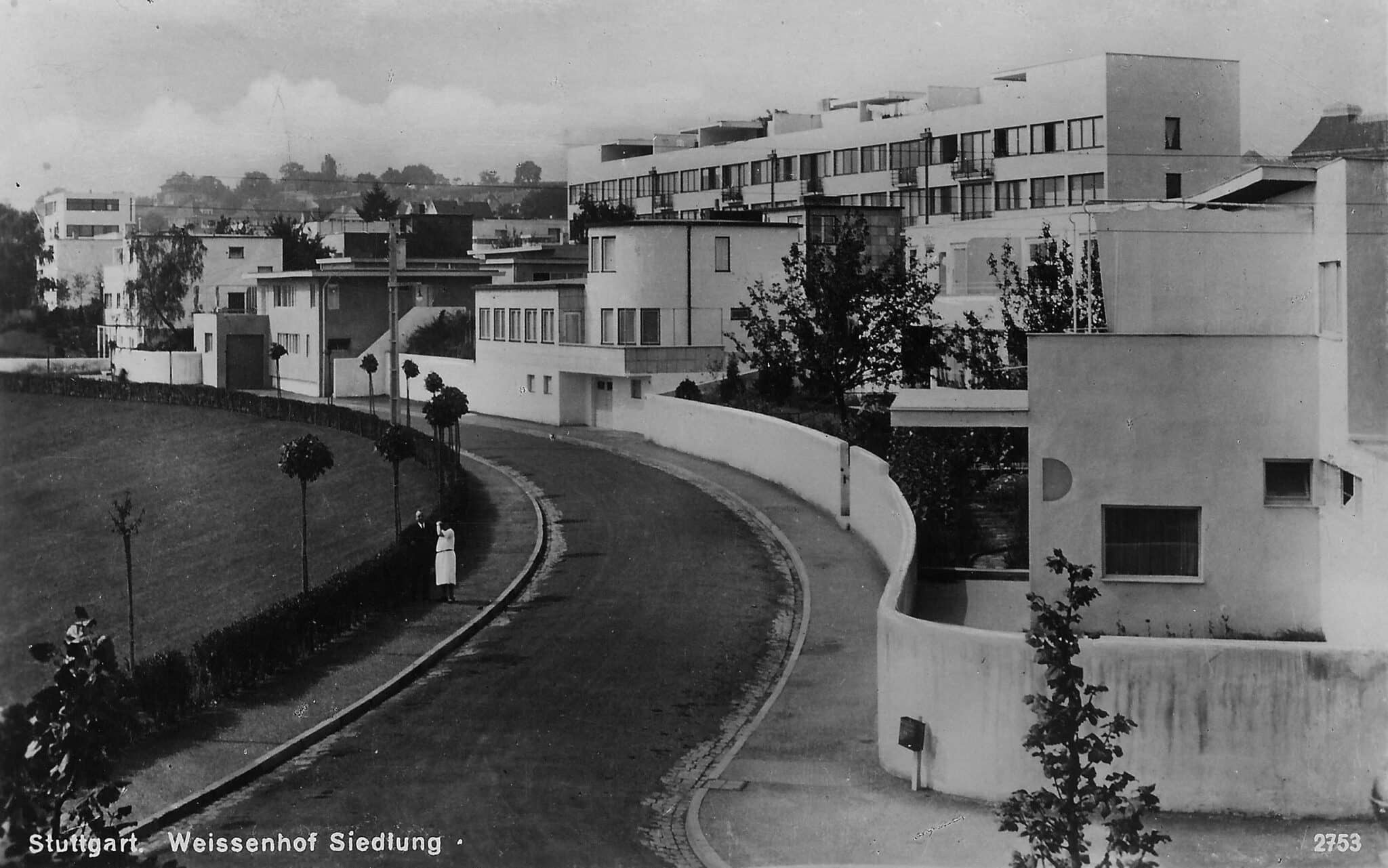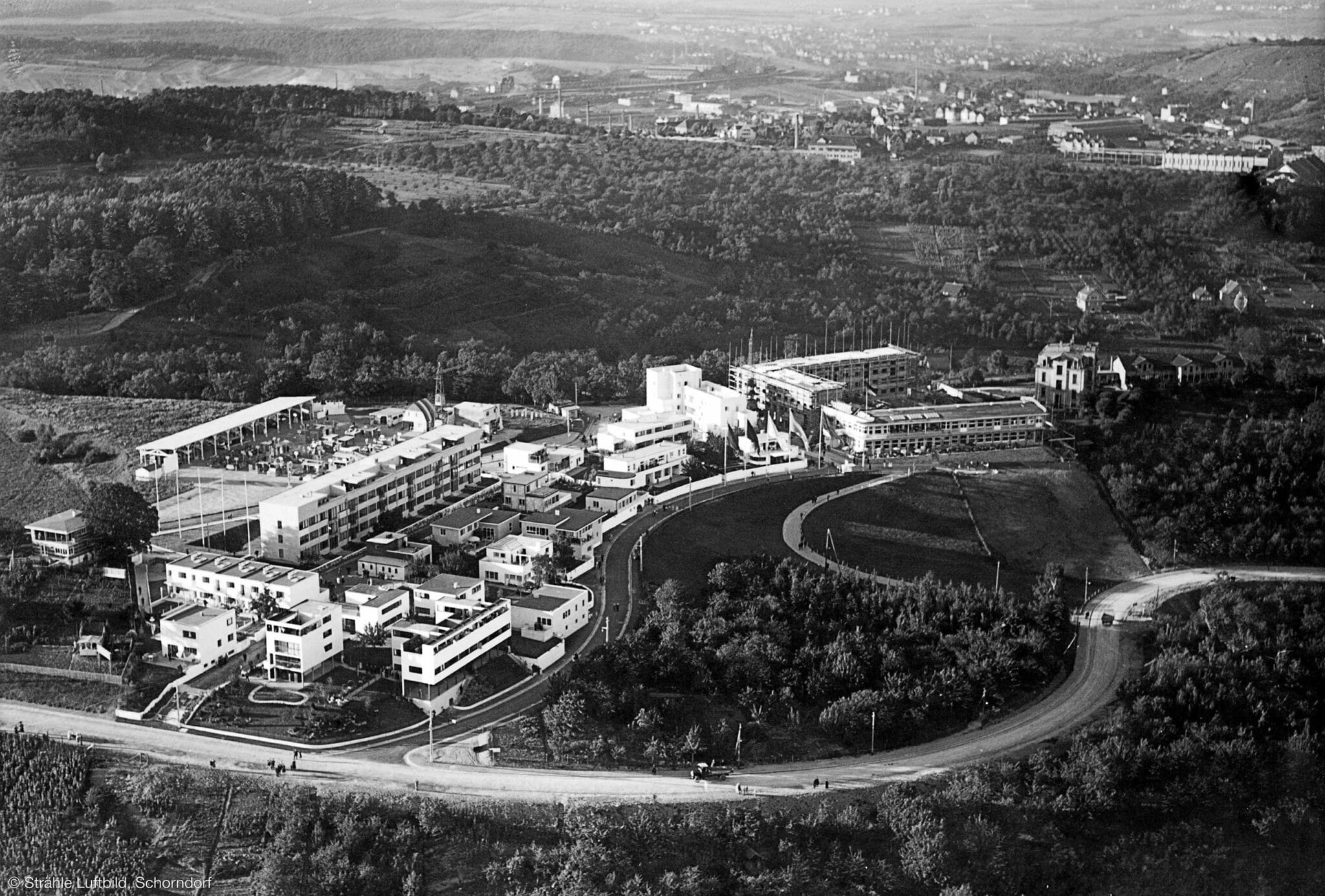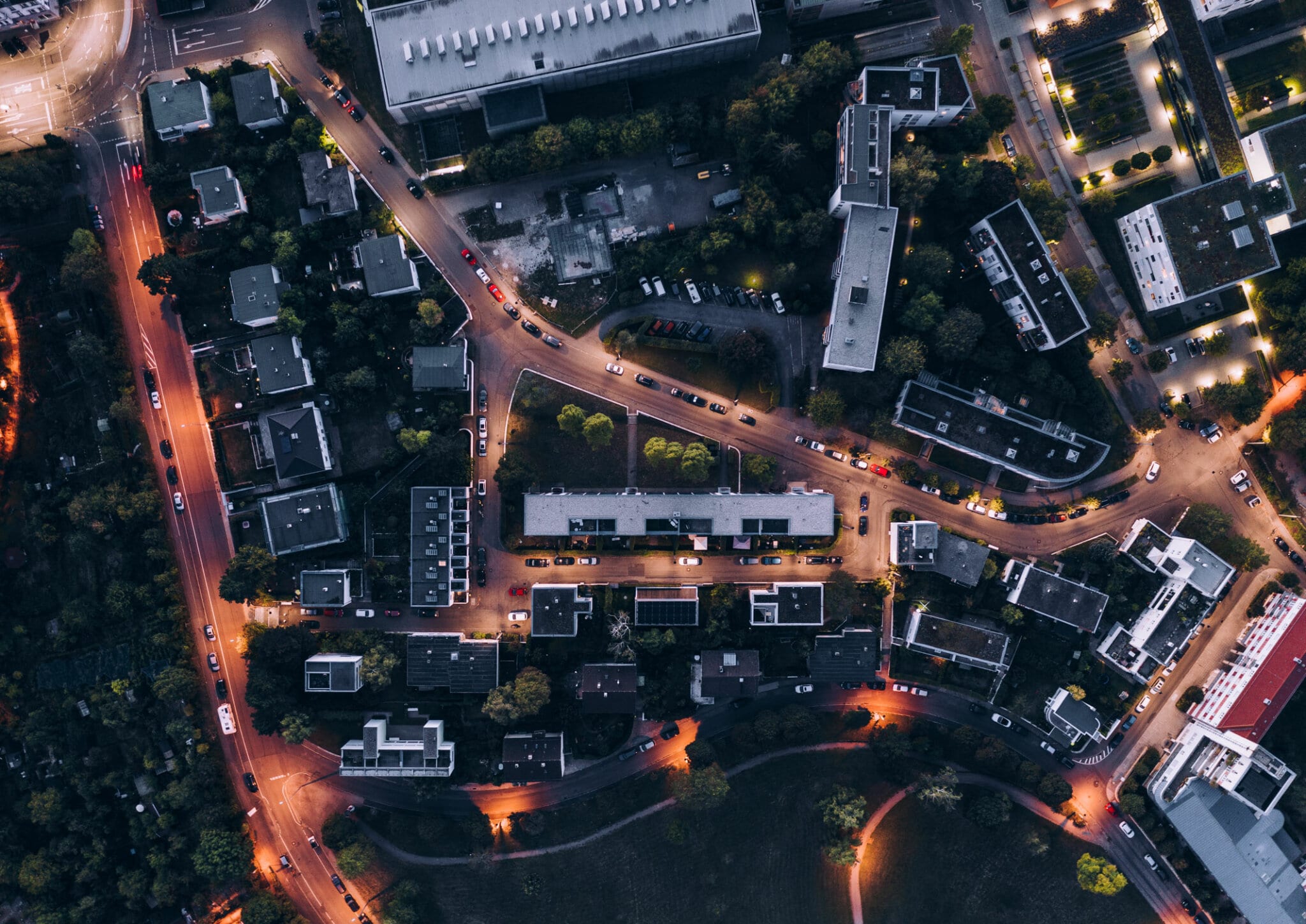100 Years Weissenhof
Weissenhof Estate:
a built manifesto of modern housing
The Weissenhof Estate (Weissenhofsiedlung) is one of the most important examples of »Neues Bauen« (»New Objectivity« or »New Building«) in the history of architecture. It was part of a building exhibition held by Deutscher Werkbund together with the City of Stuttgart in 1927. Its programmatic title »Die Wohnung« was linked to a vision, namely a radical turn away from traditional forms of housing in favour of contemporary housing for professional, mobile and healthconscious urban dwellers.
The architectural avantgarde of the time under the artistic leadership of Ludwig Mies van der Rohe wanted to use these innovative approaches to counter the lack of living space. The plan was to create lowcost homes using industrially manufactured materials, typological components and modular designs.
17 international architects, including Le Corbusier, Walter Gropius and Hans Scharoun, experimented with floor plans, designs, materials and home technology.
In just four and a half months, 21 model buildings with 60 residential units were created. With a clear and sober layout, each home had central heating, a bathroom and toilet as well as a kitchen with gas appliances. The cubicstyle flat roofs were unusual for the era, making them the subject of much scorn. The success of the exhibition proved the architects right, however, with roughly 500,000 visitors flocking to the exhibition from far beyond Germany’s borders.
The estate was badly damaged in World War Two, resulting in uncertainty surrounding its future after 1945. It was thanks only to the dedication of the people of Stuttgart and to Theodor Heuss, the Federal President at the time, that the estate was not torn down but in fact declared a protected structure in 1958. In 2016, the two homes by Le Corbusier were given World Heritage Site status.
The question of the ability of existing forms of housing to be futureproof has become current again in recent times. Has the time come once again for radical changes in existing housing typologies, mobility requirements and infrastructure considerations – based on the model of the Weissenhof Estate? How can the city be transformed into a liveable and futureproof space? Exactly one hundred years after the Weissenhof experience, IBA’27 aims to provide answers to these questions through a wide range of experimental projects.




